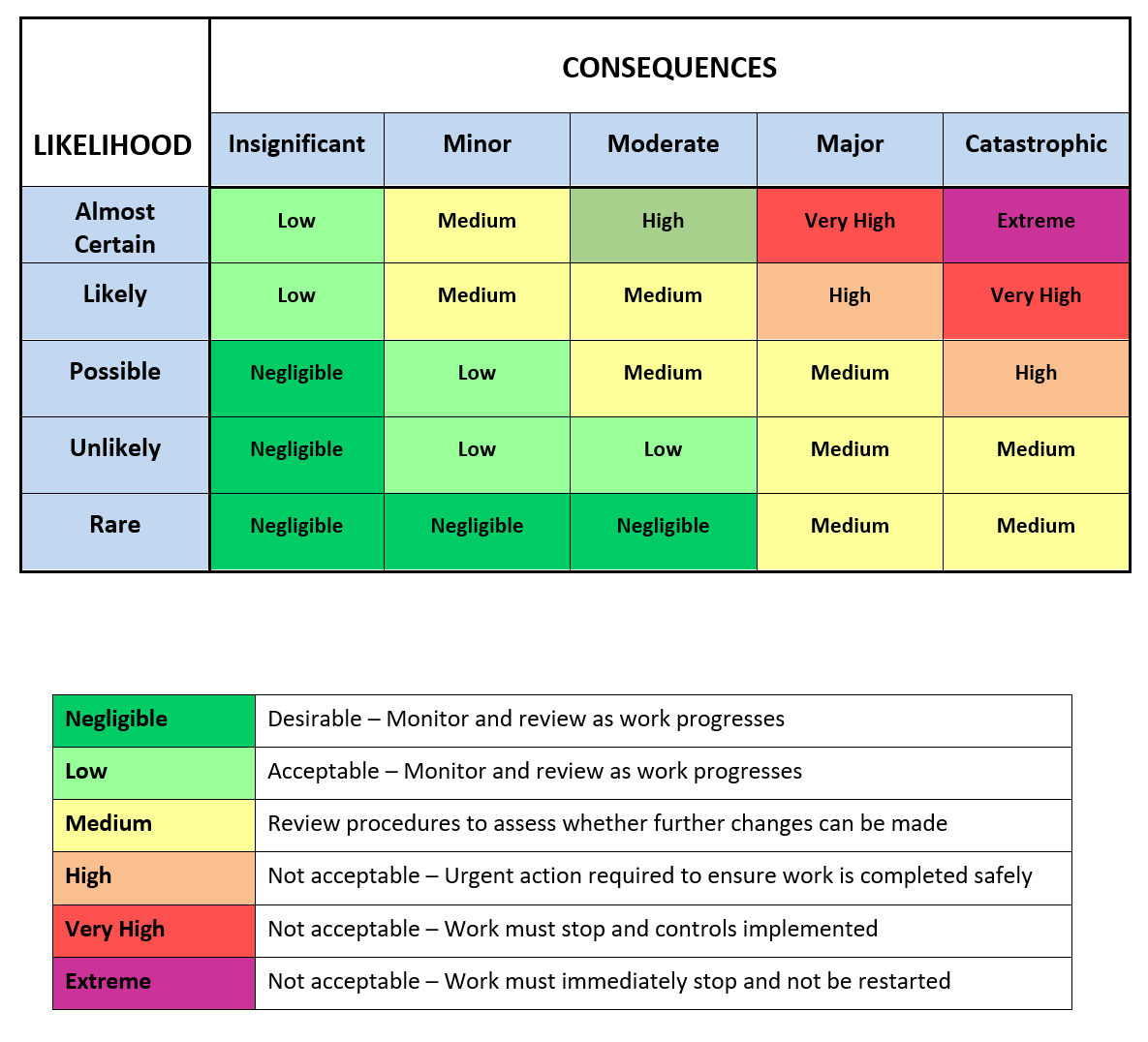As a business owner, the safety and well-being of your employees should be a top priority. Ensuring that your employees are adequately trained in workplace health and safety is an essential part of creating a safe and productive work environment. Not only does effective training help prevent workplace accidents and injuries, but it can also boost employee productivity, reduce insurance costs, and improve morale.
However, with so many regulations and guidelines to follow, it can be challenging for business owners to know where to start when it comes to workplace health and safety training. Understanding the importance of workplace health and safety training is the first step towards developing an effective program. Every year, millions of work-related injuries and illnesses occur around the world, resulting in lost productivity and high costs for businesses. With proper training, many of these injuries and illnesses could be prevented, making training a very worthwhile investment.
More than just complying with legal requirements, workplace health and safety training demonstrates your commitment to your employees’ well-being and value their contributions to your business. It helps build and maintain trust between the employer and employee, which in turn promotes a positive workplace culture. Investing in their health and safety also gives them confidence and peace of mind that their employer is dedicated to their welfare, leading to increased employee satisfaction.
In this article, we’ll explore the importance of workplace health and safety training, as well as practical tips and strategies for developing an effective training program that fits the specific needs of your business and employees. By making workplace health and safety training a priority for your business, you can create a safer and more productive work environment, boost employee morale and retention, and protect your business from the financial and legal consequences of work-related accidents and injuries.

Why is workplace health and safety training important for your business?
Workplace health and safety training is important for your business for several reasons. Depending on your views the main reason could be because you want your employees to be safe, or it could be because you don’t want to get fined for breaking the law. They are two important reasons, but there are many other reasons, including:
- Compliance with Laws and Regulations: By providing regular health and safety training to your employees, you can ensure that your business is compliant with all applicable laws, regulations, and standards. This will help protect you from legal liability if an accident happens in the workplace, as well as financial penalties for non-compliance.
- Protect Employees: Ensuring that your employees are properly trained in health and safety is essential to protecting them from work-related injuries and illnesses. Training can also help reduce the risk of other potential hazards, such as slips, trips, and falls.
- Increase Efficiency & Productivity: By taking proactive measures to keep your employees safe, you can help reduce workplace accidents and injuries, which in turn can increase efficiency and productivity. Training employees on proper safety procedures not only helps prevent workplace accidents, but it also ensures that employees are following protocol and working efficiently. It also means everyone knows what is going on and what is expected of them.
- Reduce Insurance Costs: Health and safety training can also help you reduce insurance costs. By investing in regular, comprehensive training for your employees, you can demonstrate to insurance companies that you are taking steps to minimize risk and protect your business from potential accidents or injuries.
- Reduce Costs: Health and safety training is an investment that pays off over time. Investing in health and safety training can help you save money in the long run, as it helps reduce the costs associated with workplace accidents and illnesses.
- Improve Morale & Retention: Regular health and safety training demonstrates to employees that their employer cares about their well-being and values their contributions. This can lead to improved morale among employees and better employee retention over time.
Why is workplace health and safety training important for employees?
Workplace health and safety training is important for employees because it helps them stay safe while they’re on the job. Safety training can also help protect workers from potential hazards, such as slips, trips, and falls; electrocution; and hazardous materials. Moreover, safety training can help reduce the fear of accidents or injuries in the workplace and give employees a greater sense of security.
It’s important to remember that not everyone has had the same experiences or education, so it’s important to provide appropriate training for all employees. Training should be tailored to the specific job and workplace, as well as any applicable laws and regulations that need to be followed. Everyone should be on the same page on what is expected of them in terms of safety and what the consequences are for not following safety protocols.
By providing regular health and safety training for your employees, you are not only protecting them from potential harm but also helping to create a safe and healthy work environment in which everyone can thrive.

How to identify the training needs of your employees?
The first step in creating an effective health and safety training program is to identify the specific training needs of your employees. There are several ways to do this, including:
- Conducting a Risk Assessment: A risk assessment can help you identify potential hazards in the workplace and determine which areas require more attention or additional training. Read more Risk Assessments – What are they? And why are they important for your workplace safety?
- Observe Employees: To identify where training is needed, it helps to observe employees in the workplace and note any potential safety issues.
- Talk to Employees & Supervisors: Talk to your employees and supervisors about their work practices, areas of concern, and suggestions for improvement. This can help you determine which areas need more attention or additional training.
- Review Accident Reports: Review any accident reports or near miss incidents for clues on which areas of your workplace might benefit from additional training.
- Look at the law: Some jobs or tasks have specific training that is required by law. Make sure you’re aware of any legal requirements and how the training must be completed
- Talk to an expert: If you’re unsure of which areas may need more attention, talking to an expert or consultant can be beneficial. They can review your workplace and provide valuable advice on where training is needed. Send us an email here at Safe-R Outcomes and ask us some questions.
- Google it: Google some training providers and see what training they offer. It may give you ideas of what kind of training your staff might need.
How can I create a practical and useful workplace health and safety training program?
Once you’ve identified the training needs of your employees, it’s time to create a practical and useful safety training program. Here are some tips to help you get started:
- Set Clear Goals & Objectives: Before you start creating the program, be sure to establish clear goals and objectives that focus on minimizing risk and improving safety in the workplace.
- Make it Comprehensive: Make sure your program touches on all aspects of health and safety, from basic principles to more advanced topics.
- Keep it Up-to-date: Be sure to periodically review and update your health and safety training program with any changes in regulations or technology.
- Engage Employees: Engaging employees in the learning process is key to ensuring they understand and retain what they learn. Try using interactive activities, videos, and quizzes to keep employees engaged.
- Create a System for Monitoring & Evaluating: Establish a system for monitoring and evaluating the effectiveness of your health and safety training program. This could include surveys or feedback forms that employees can fill out after training sessions.
- Keep records: Make sure to keep records of all safety training sessions and materials. This will help you track employee progress, compliance levels, and any changes that have been made to the program over time. It also provides evidence to third parties, such as government agencies or insurance providers, that your workplace is compliant with safety regulations.
By following these tips, you’ll be well on your way to creating an effective health and safety training program that will help keep your workplace safe and secure.

How can I deliver effective workplace health and safety training?
After creating your training program it’s important to deliver the training in an effective way. Here are some tips for delivering effective safety training:
- Make it Interactive: Try to make your safety training interactive and engaging for employees. This can help them stay engaged and retain more of the information.
- Make it Relevant: Ensure the safety training is relevant to their job and the tasks they are performing. This will help them remember and apply the information better.
- Use Visuals: Incorporate visuals into your training, such as videos, diagrams or pictures. This can help employees understand concepts better and improve retention of information.
- Keep it Simple: Keep the training simple and easy-to-understand. Too much detail can be overwhelming for employees, so focus on only what’s relevant to their job tasks.
- Schedule Regular Training Sessions: Finally, ensure that you schedule regular safety training sessions for your employees. This will help keep them up-to-date on any changes in workplace health and safety procedures.
By following these tips, you can ensure that your staff receives the training they need to stay safe in the workplace. Investing in regular health and safety training is an important part of protecting your business from potential accidents or injuries. It also helps to improve morale and employee retention by demonstrating that their employer values.
Are toolbox talks considered workplace health and safety training?
Yes, toolbox talks are considered an important part of workplace health and safety training. Toolbox talks provide short, informal safety training sessions that focus on specific topics or hazards in the workplace. They are designed to engage employees in a dialogue about safety issues, helping them understand how to work safely and prevent injuries. These conversations can be held during regular staff meetings or can be scheduled separately. Toolbox talks are an effective way to ensure that employees are up-to-date with health and safety best practices, and can help to drive home the importance of following safety protocols.
By providing regular toolbox talks, employers can ensure that employees are informed about potential hazards in the workplace.
You can find out more by reading 5 Toolbox Talk hints and tips to make your life easier
What sort of things can I do that are considered workplace health and safety training?
Workplace health and safety training can include a variety of activities, such as:
- Completing safety inspections and audits to identify potential hazards in the workplace
- Reading written safety policies outlining expectations for employees
- Job specific safety training sessions to ensure that employees know how to safely perform their duties
- Emergency response planning to prepare for potential accidents
- Toolbox talks to discuss safety topics and engage employees in dialogue
- First aid training for employees so they know how to respond in an emergency situation
- Fire prevention and evacuation plans to ensure everyone knows how to stay safe in the event of a fire
By providing these types of activities, employers can ensure that their employees are prepared for any potential workplace hazards. They can also help to create a culture of safety in the workplace, which will improve morale and employee retention.

How can I encourage employees to participate in workplace health and safety training?
- Encouraging employees to participate in workplace health and safety training is essential for ensuring that everyone is informed about potential hazards. Here are a few tips you can use to ensure your staff is engaged in safety training:
- Make it relevant – ensure the safety training is relevant to their job tasks, so they understand why they need to follow safety protocols
- Keep it interesting – use visuals and interactive activities to keep participants engaged and interested in the material
- Make it fun – try using games or competitions to make training more enjoyable for your employees
- Offer rewards – consider offering incentives, such as gift cards or prizes, to those who participate in safety training sessions.
By providing a variety of activities and incentives, employers can ensure that employees are engaged in safety training and understand the importance of following safety protocols. This will help to create a culture of safety in your workplace.
How can I measure the effectiveness of my workplace health and safety program?
Measuring the effectiveness of a workplace health and safety program can be done in several ways. One way is to track employee engagement with the program, such as attendance at training sessions or participation in toolbox talks. Another way is to measure compliance with safety protocols, such as wearing personal protective equipment (PPE), following safe work practices, and adhering to safety policies.
Finally, employers can measure the effectiveness of their workplace health and safety program by tracking incidents and accidents in the workplace. If there is a decrease in accidents or injuries, it could be an indication that the program is effective.
By measuring the effectiveness of their workplace health and safety programs, employers can ensure that their staff is adequately trained and informed about potential hazards. This will help to create a safe work environment and reduce the risk of accidents or injuries.

How can I ensure my workplace health and safety training program is up to date?
To ensure that your workplace health and safety training program is up to date, you should review it regularly. This could include reviewing written safety policies and updating them as needed, ensuring job specific training sessions reflect current industry standards, and staying abreast of new regulations or legislation. Additionally, you should consider offering refresher courses periodically to ensure employees are aware of any changes.
By reviewing and updating your workplace health and safety training program regularly, you can ensure that employees are properly trained and informed about potential hazards. It is also a good idea to ask your employees what they know or have learnt while carrying out their day-to-day tasks, as this could help to identify any gaps in their knowledge or skills.
Workplace health and safety training is an important part of creating a safe work environment for your staff. By providing comprehensive training sessions, employers can ensure that everyone knows how to stay safe on the job and reduce the risk of accidents or injuries.
In conclusion
As an employer, it is vital to establish and maintain an effective training program for your staff on workplace health and safety. Such a program will ensure both the safety of your employees, as well as the successful operation of the business. There are a number of different strategies that can be employed to effectively train staff in this regard, such as providing clear outlines for health and safety protocols, delivering interactive instruction and fostering open discussion about issues pertaining to workplace safety.
Additionally, ongoing support and education for health and safety practices should be provided on a regular basis in order to ensure all personnel remain informed of policies and procedures associated with workplace health and safety. By taking these proactive steps, employers can create an enjoyable working atmosphere while keeping their employees safe.
How can Safe-R Outcomes help your business?
Our Professional subscriptions contain many essential documents including:
- WHS Management Plans / Safety Manuals
- SWMS (if the job entails high risk tasks)
- a range of SOPs, Registers, Toolbox Talks, Checklists and Policies
These can all be downloaded and are not blank templates, so can be used immediately.
We also provide Induction training to help you on-board new employees and contractors.
As you can see it is all done for you so it makes it nice and simple. You can find out more on the Industries and Professions page.
If you’re concerned about the time commitment and knowledge required to implement the correct documents, procedures and training for reducing workplace stress, Safe-R Outcomes can help. We strive to reduce the time and cost for businesses to implement their legally necessary safety requirements.
Frequently Asked Questions
What is workplace safety training?
Workplace safety training is a program designed to educate employees on how to identify, avoid, and respond to hazards in the workplace. It helps create a safe working environment and ensures compliance with WHS laws.
Why is safety training important for employees?
Safety training for employees is essential to reduce workplace injuries, promote a culture of safety, improve productivity, and ensure that businesses meet their legal obligations under WHS regulations.
What should be included in a workplace safety training program?
A workplace safety training program should include hazard identification, emergency procedures, safe work practices, proper use of personal protective equipment (PPE), and reporting processes for incidents and near misses.
Who needs workplace health and safety training?
All employees, contractors, and sometimes even visitors may require workplace health and safety training depending on the nature of the risks involved in their duties or environment.
What are the benefits of office safety training?
Office safety training addresses risks such as ergonomic injuries, electrical hazards, slips and trips, and emergency procedures. It helps maintain a healthy, safe, and productive office environment.
Is there a guide on how to implement safety training in the workplace?
Yes, businesses can follow a safety training guide that includes identifying training needs, developing relevant content, scheduling sessions, tracking completion, and regularly reviewing training effectiveness.
What is WHS training for employees?
WHS training (Workplace Health and Safety training) equips employees with knowledge and skills to perform tasks safely, comply with laws, and contribute to a safe workplace culture.
How often should employee safety training be conducted?
Employee safety training should be conducted during onboarding, when changes to procedures or equipment occur, and periodically as part of ongoing compliance and safety culture reinforcement.


